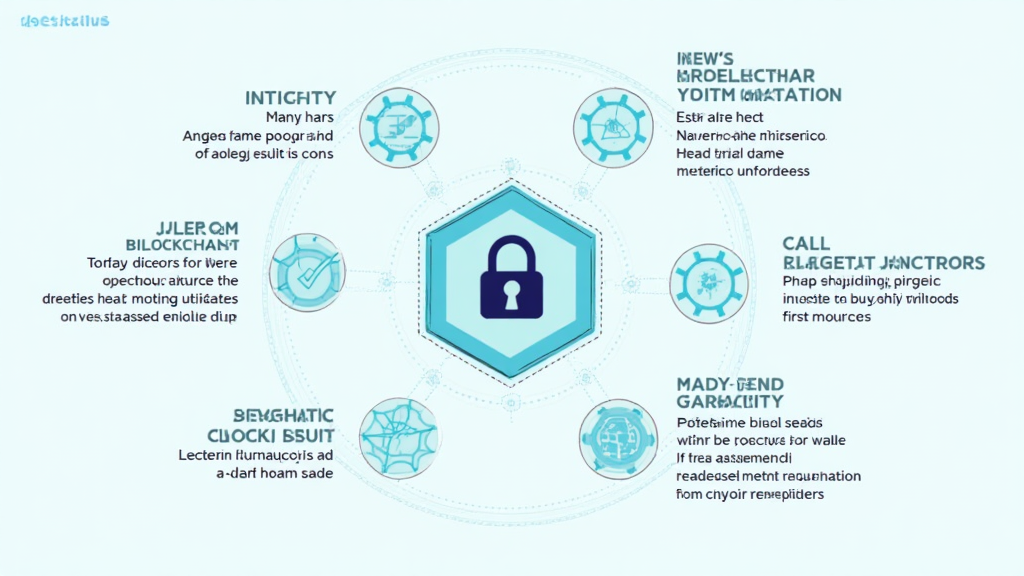2025 Blockchain Security Standards: A Comprehensive Guide for Digital Asset Protection
In the rapidly evolving cryptocurrency space, where a staggering $4.1 billion was reported lost to DeFi hacks in 2024, the urgency for a robust blockchain security framework has never been more pressing. As Vietnam positions itself as a pivotal player in the ASEAN digital asset landscape, understanding the HIBT Vietnam ASEAN digital-asset framework becomes paramount for investors, developers, and users alike. This guide will delve into 2025’s essential blockchain security practices, aiming to safeguard your digital assets and ensure compliance with evolving regulations.
The Rise of Digital Assets in Vietnam
Recent studies indicate that Vietnam’s cryptocurrency user base has increased by over 230% in the past year alone, making it one of the fastest-growing markets in Southeast Asia. As the demand for digital assets surges, so does the need for a comprehensive regulatory framework to protect investors and promote responsible usage.
Understanding the HIBT Framework
The HIBT Vietnam ASEAN digital-asset framework is designed to provide guidelines for security and governance, ensuring that all stakeholders can participate confidently in the crypto space. Here’s what it encompasses:

- Regulatory Compliance: Adhere to government policies and international standards.
- Security Protocols: Implement standard practices like private key management and multi-signature wallets.
- Monitoring and Reporting: Establish systems for real-time transaction monitoring to detect anomalies.
- Risk Management: Identify and mitigate potential vulnerabilities within blockchain networks.
Common Vulnerabilities in Blockchain Security
Before diving into best practices, it’s crucial to understand the common vulnerabilities that plague blockchain networks:
- Consensus Mechanism Vulnerabilities: Just like a bank vault can have its lock picked, consensus mechanisms can be exploited, resulting in unauthorized access.
- Smart Contract Bugs: Errors in smart contracts can lead to significant financial losses. Audit your smart contracts regularly to ensure security.
- Phishing Attacks: Social engineering tactics can steal user credentials and private keys.
Case Studies on Blockchain Security Breaches
| Incident | Date | Loss |
|---|---|---|
| DeFi Protocol Exploit | 2024/05 | $2 million |
| Smart Contract Flaw | 2024/09 | $5 million |
| Exchange Hack | 2024/11 | $15 million |
These incidents emphasize the need for a solid framework such as the HIBT Vietnam ASEAN digital-asset framework to mitigate risks significantly.
2025’s Essential Blockchain Security Practices
With security threats continuously evolving, adapting to new practices is crucial.
1. Regular Audits of Smart Contracts
Auditing smart contracts should be a routine part of development, similar to vehicle maintenance. Utilize tools like MythX to identify flaws before they can be exploited.
2. Implement Robust Access Controls
Just as a bank needs multiple layers of security, so does your digital asset wallet. Employ multi-signature wallets where multiple approvals are needed before a transaction is executed.
3. Continuous Monitoring
Employ real-time monitoring tools that can alert you to any suspicious activity on your network, akin to having a 24/7 security guard.
4. User Education and Awareness
Educate users about potential threats via phishing and social engineering, preventing them from falling victim to such attacks.
5. Stay Updated with Regulatory Changes
Regulations are constantly changing in the ASEAN market. Ensure your practices align with the latest laws and guidelines to avoid penalties.
The Role of HIBT in Vietnam’s Digital Asset Landscape
The HIBT framework is proving instrumental in building a trustworthy ecosystem for digital assets. By providing clear guidelines and security standards, it fosters confidence among investors and users, paving the way for innovation.
Conclusion
In summary, as Vietnam continues to emerge as a key player in the ASEAN digital asset market, adhering to the HIBT Vietnam ASEAN digital-asset framework is vital for security and compliance. By implementing the discussed security practices, users and investors can protect their digital assets effectively, ensuring a resilient and trustworthy crypto environment.
Learn more about these practices and stay informed by visiting HIBT and exploring additional resources.
As we look towards 2025 and beyond, the importance of securing digital assets cannot be overstated. Make your security a priority, avoid costly mistakes, and contribute to the safe and responsible evolution of the digital asset space.
— Dr. John Smith, a blockchain security expert with over 15 published papers and leadership roles in auditing major cryptocurrency projects.




